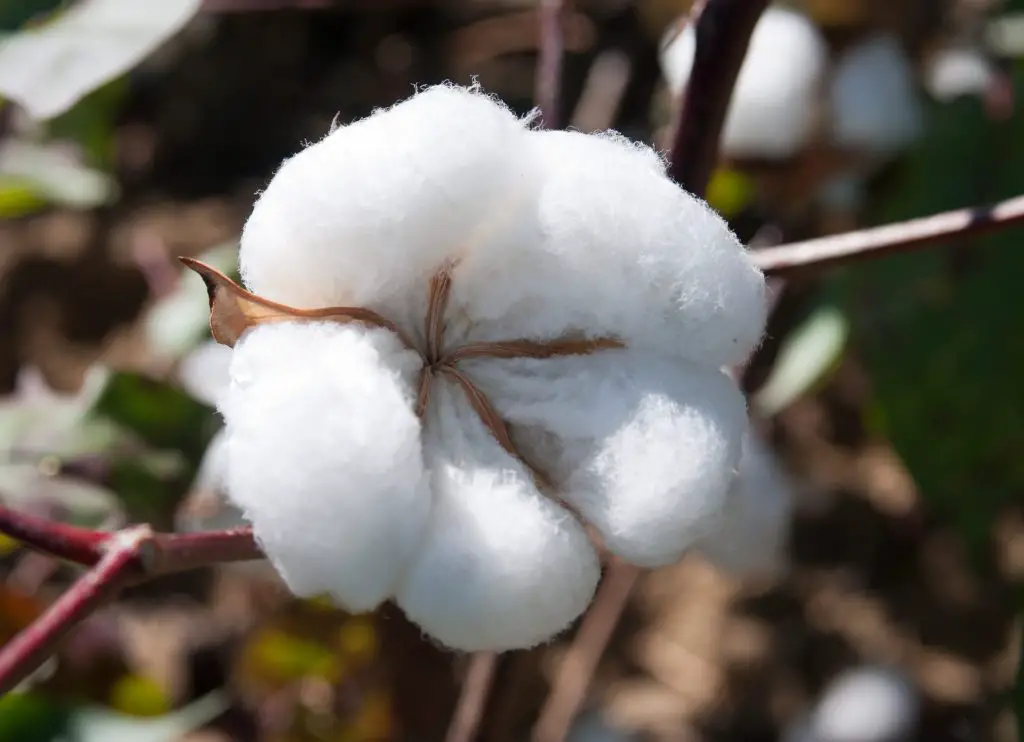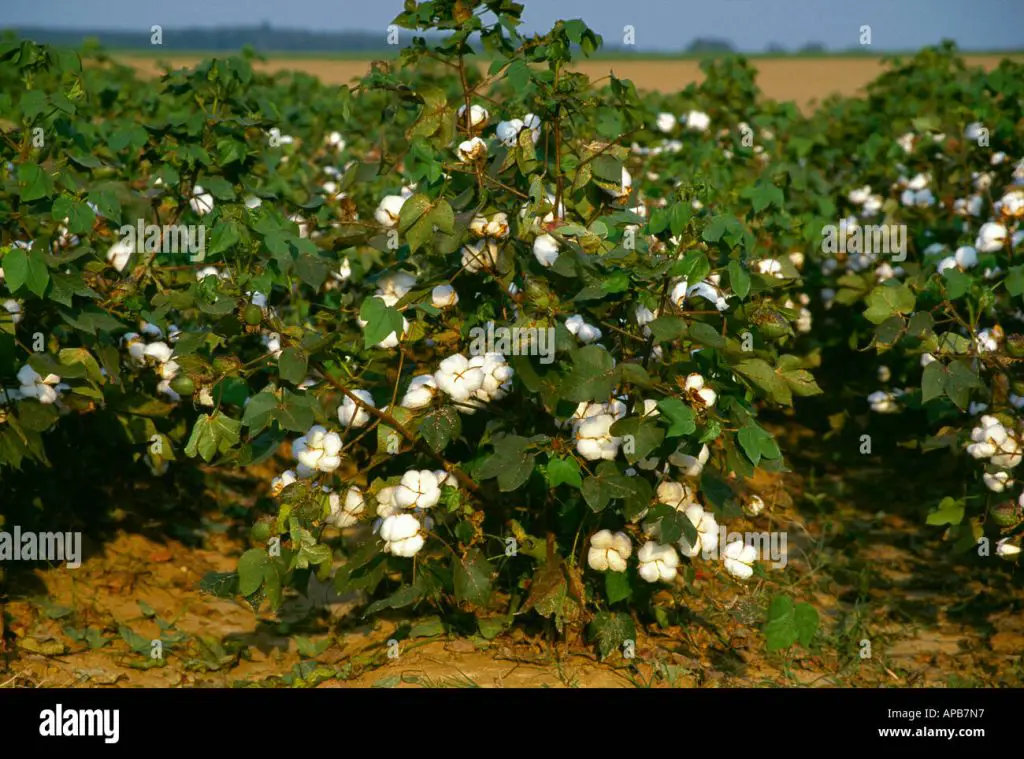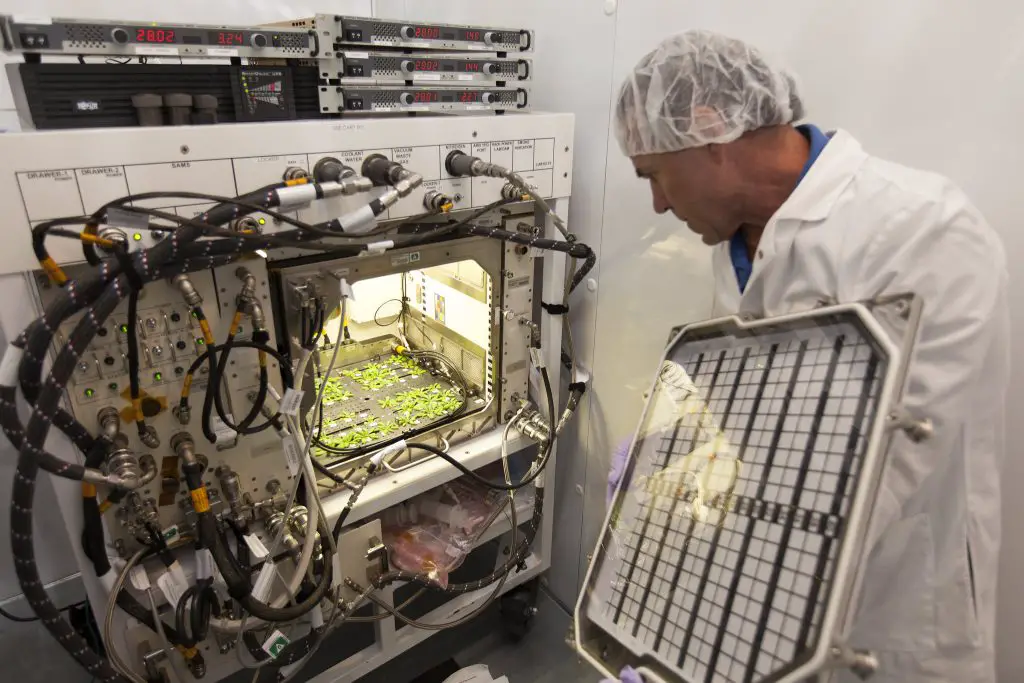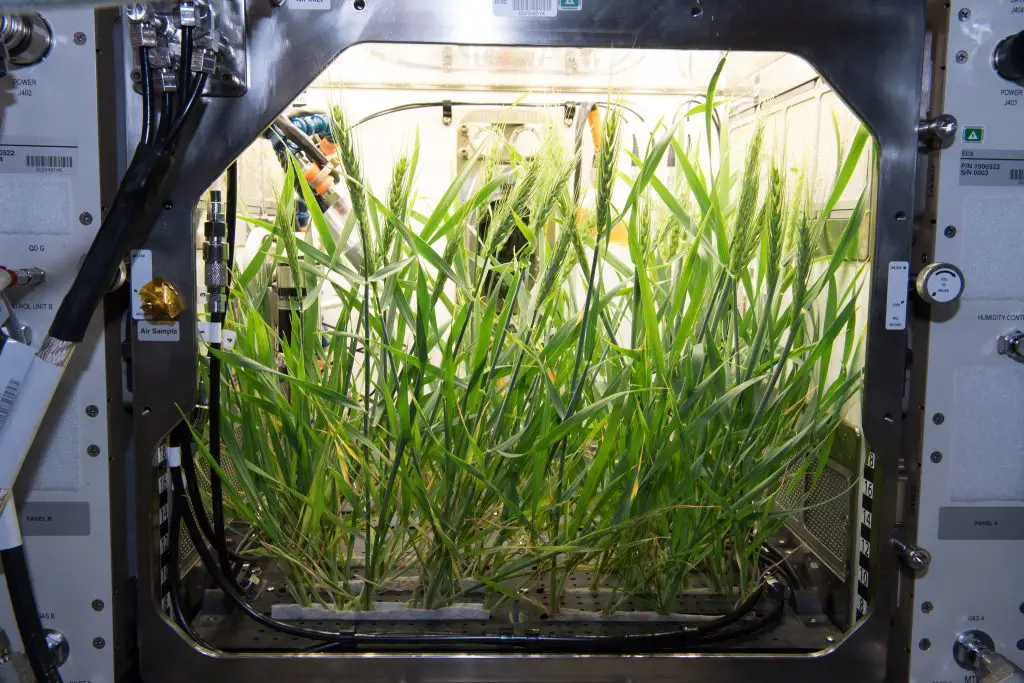A cotton plant looks like a small bush covered in round white fluffy bolls that contain the cotton fibers. Cotton plants are small bushy plants with large leaves that grow on a stem.
The plants have vibrant green foliage and typically reach a height of about three to six feet. The bolls, which are round and white, develop on the branches of the plant. Inside these bolls are the cotton fibers that we use to make various textile products.
The plant’s flowers, which are typically pale yellow, bloom for a few days before transforming into the bolls. Cotton plants require warm temperatures and plenty of sunshine to grow and mature. They are often cultivated in dry and arid regions, making cotton one of the most important cash crops in many countries around the world.

Credit: barnhardtcotton.net
The Anatomy Of A Cotton Plant: Understanding Its Structure
Cotton plants are incredibly fascinating organisms, with a structure uniquely suited for their survival and the production of the soft and versatile fibers we all know and love. In this blog post, we will delve into the anatomy of a cotton plant, understanding its structure from leaves to capsules.
So let’s explore the various components of a cotton plant and uncover their significance.
Leaves: The Green Powerhouse Of Photosynthesis
Leaves play a vital role in the life of a cotton plant, serving as the primary sites for photosynthesis. Here are the key points to know about cotton plant leaves:
- Cotton leaves are typically broad and heart-shaped, optimizing their surface area for maximum sunlight absorption.
- Their vibrant green color is attributed to the presence of chlorophyll, a pigment essential for converting sunlight into energy.
- Through photosynthesis, leaves produce carbohydrates, which are transported to other parts of the plant to support growth and development.
Stems: Providing Support And Nutrients To The Cotton Plant
Stems are the backbone of a cotton plant, providing essential support and transporting vital nutrients throughout its entire structure. Let’s highlight the key details about cotton plant stems:
- Cotton stems, also known as stalks, are sturdy and fibrous, allowing them to withstand the weight of the plant.
- Besides providing structural support, stems house the plant’s vascular system, consisting of xylem and phloem, responsible for transporting water, minerals, and sugars.
- Nutrients acquired by the roots are carried upward through the stems, nourishing the various plant parts and facilitating growth.
Buds: Where The Magic Begins – The Birthplaces Of Cotton Flowers
Budding stages are a pivotal and exciting phase in the lifecycle of a cotton plant, as this marks the emergence of cotton flowers. Let’s explore the essential aspects of cotton plant buds:
- Buds are formed at the axils of the leaves, representing the junction between the stem and a leaf.
- These small, cone-shaped structures bear the potential to develop into cotton flowers, initiating the reproduction process.
- Within the buds, floral primordia develop, containing the genetic material needed to produce the beautiful cotton blooms we associate with the plant.
Flowers: The Beautiful And Delicate Blooms That Give Rise To Cotton Capsules
Cotton flowers are not only visually appealing but also hold the key to the plant’s bountiful harvest of fibers. Here are the important details about cotton plant flowers:
- Cotton flowers are typically white or creamy in color, adorning the plant with delicate beauty.
- Each flower has a tubular structure, composed of multiple petals fused together, forming a trumpet-like form.
- These flowers are rich in nectar, attracting pollinators like bees and butterflies, aiding in the fertilization process and the production of cotton capsules.
Capsules: The Home Of Cotton Fibers, Containing Seeds For The Next Generation
The formation of cotton capsules is a critical stage in the cotton plant’s lifecycle, as they house the precious fibers and seeds for future generations. Let’s uncover the significance of cotton plant capsules:
- After successful pollination, the cotton flowers transform into capsules, also referred to as bolls.
- Each capsule contains numerous seeds enveloped by a mass of fine cotton fibers, which gradually expand as the seeds mature.
- These fibers, composed mainly of cellulose, intertwine to create the fluffy and versatile material utilized in various textile industries.
Understanding the anatomy of a cotton plant allows us to appreciate the intricacies of its structure and the incredible journey of cotton fiber production. From the leaves harnessing the sun’s energy to the capsules nurturing the seeds and fibers, every part plays a crucial role in the plant’s survival and our ability to enjoy the comfort and versatility of cotton.
So, next time you admire a cotton garment, remember the remarkable process and the remarkable plant behind it.
Growth And Development: From Seed To Cotton Harvest
Cotton is one of the most widely grown and important crops in the world, used to make a variety of products ranging from clothing to household items. But have you ever wondered what a cotton plant actually looks like? In this blog post, we will explore the growth and development of a cotton plant, from seed to harvest.
Germination: The Beginning Of Life For The Cotton Plant
- Cotton seeds require warm soil temperatures, typically around 60-65°f, to germinate successfully.
- Germination is the process in which the seed absorbs water, swells, and begins to sprout.
- After germination, the seedling emerges from the soil, signaling the start of the cotton plant’s life cycle.
Seedling Stage: The Emergence Of The Cotyledons And The Development Of True Leaves
- Cotyledons, also known as seed leaves, are the first leaves to appear after germination.
- These leaves provide energy to the seedling until the true leaves develop.
- The true leaves are the next set of leaves to emerge, and they are responsible for photosynthesis and further growth.
Vegetative Stage: Rapid Leaf Growth, Branching, And Height Increase
- During the vegetative stage, the cotton plant experiences rapid leaf growth, allowing it to gather more sunlight for energy.
- The plant also begins to branch out, forming multiple stems from the main stem.
- Additionally, the height of the cotton plant increases during this stage, with the potential to reach several feet tall.
Floral Initiation: The Transition From Vegetative To Reproductive Growth
- Floral initiation marks the transition from vegetative growth to reproductive growth in the cotton plant.
- The plant starts producing buds, which will eventually develop into flowers.
- This stage is crucial as it sets the foundation for boll development and cotton fiber production.
Boll Development: Formation And Maturation Of Cotton Fibers Within The Capsules
- Bolls are the capsules that contain the cotton fibers.
- They develop from the flowers and gradually mature over time.
- Inside each boll, the cotton fibers grow and fill the capsule, ultimately becoming the cotton we use to make various products.
Harvest Time: Recognizing When The Cotton Plant Is Ready To Be Harvested
- Harvesting cotton at the right time is crucial for obtaining high-quality fibers.
- One way to determine harvest time is by monitoring the bolls, which should be fully developed and bursting open.
- Weather conditions and plant health are also considered when deciding the optimal timing for harvest.
From germination to harvest, the growth and development of a cotton plant are truly fascinating. Understanding these stages is essential for both farmers and consumers alike, as it gives us a deeper appreciation for the cotton we use every day.
So the next time you see a cotton product, remember the journey it took from a tiny seed to the fabric in your hands.
Varieties Of Cotton Plants: Exploring A World Of Diversity
Cotton plants are not only an essential component of the textile industry but also a fascinating subject to explore. From the most widely cultivated varieties to the rare and coveted ones, the world of cotton plants is one of diversity and intrigue.
Let’s delve into the different types of cotton plants and discover their unique characteristics.
Upland Cotton: The Most Widely Cultivated And Productive Variety
- Upland cotton, also known as american cotton, is the most commonly grown variety worldwide.
- It thrives in diverse climates and is responsible for the majority of global cotton production.
- Upland cotton plants have a shorter staple length compared to other varieties, making them suitable for a wide range of textile applications.
- Its adaptability, high yield potential, and ease of cultivation make it a favorite among farmers.
Pima Cotton: Known For Its Luxurious Softness And Long Fibers
- Pima cotton, also known as extra long staple (els) cotton, is renowned for its exceptional quality and softness.
- It is primarily cultivated in the united states, australia, and peru.
- Pima cotton fibers are longer and finer than those of upland cotton, resulting in a smoother and more durable fabric.
- This variety is particularly favored for luxury clothing and textiles where comfort and a lustrous finish are desired.
Sea Island Cotton: A Rare And Coveted Variety With Exceptional Fiber Quality
- Sea island cotton is a rare and highly prized variety known for its exceptional fiber quality.
- Grown exclusively in the west indies, particularly on the islands of barbados and jamaica, it is considered the finest cotton in the world.
- The long, silky fibers of sea island cotton have a silky sheen, unmatched softness, and excellent tensile strength.
- Due to its limited supply and superior quality, sea island cotton is often used in high-end garments and luxury fabrics.
Organic Cotton: Cultivated Without The Use Of Synthetic Chemicals
- Organic cotton is grown using methods that prioritize environmental sustainability and promote biodiversity.
- It is cultivated without the use of synthetic fertilizers, pesticides, or genetically modified organisms (gmos).
- Organic cotton farming practices focus on soil health, water conservation, and the use of natural alternatives to control pests and diseases.
- The resulting cotton is free from harmful chemicals and residues, making it a healthier and more eco-friendly choice for consumers.
Genetically Modified Cotton: Enhancing Traits For Increased Resistance And Productivity
- Genetically modified (gm) cotton refers to varieties that have been engineered to exhibit specific desirable traits.
- These traits often include increased resistance to pests, diseases, and adverse weather conditions.
- Gm cotton plants can also produce higher yields, reducing the need for chemical inputs and conserving resources.
- The use of gm cotton has become widespread, particularly in countries with high pest pressure, leading to increased productivity and reduced environmental impact.
As we delve into the fascinating world of cotton plants, we can appreciate the incredible diversity of these remarkable organisms. From the widespread productivity of upland cotton to the luxurious softness of pima cotton, each variety offers unique qualities that contribute to the vibrant textile industry.
Whether you prefer organic cotton for its sustainable cultivation or genetically modified cotton for its enhanced traits, understanding the different types of cotton plants allows us to make informed choices as consumers. So, the next time you admire a cotton garment, remember the astounding journey it took from the cotton plant to your wardrobe.
Frequently Asked Questions On What Does A Cotton Plant Look Like
What Are The Different Stages Of A Cotton Plant’S Growth?
A cotton plant goes through four stages of growth: seedling, vegetative, flowering, and boll development. Each stage has distinct characteristics and marks the progression of the plant’s life cycle.
How Long Does It Take For A Cotton Plant To Mature?
On average, it takes around 150 to 180 days for a cotton plant to mature and be ready for harvesting. However, this timeline can vary depending on factors such as the cotton variety, climate, and growing conditions.
What Do Cotton Plant Leaves Look Like?
Cotton plant leaves are typically a vibrant green color and have a rough texture. They are heart-shaped with pointed tips and have three to five lobes or sections. The leaves are arranged in an alternate pattern along the stem.
How Tall Can A Mature Cotton Plant Grow?
A mature cotton plant can range in height from 4 to 6 feet, but certain varieties can grow even taller. The plant’s height is influenced by various factors such as genetics, weather conditions, soil fertility, and crop management practices.
Does A Cotton Plant Have Flowers?
Yes, cotton plants produce flowers as part of their reproductive process. The flowers are typically cream or yellowish-white in color and have a bell-shaped appearance. These flowers eventually develop into bolls, which contain the cotton fibers.
Conclusion
To sum it up, the cotton plant is a fascinating and versatile crop that plays a significant role in our daily lives. Its distinctive features, such as the rounded leaves and fluffy cotton bolls, make it easily identifiable. From its origins in warm, tropical climates to its widespread cultivation in different parts of the world, the cotton plant continues to be a vital resource for various industries.
Understanding the appearance of a cotton plant enables us to appreciate its significance and the labor-intensive process involved in its cultivation. Whether used for clothing, household items, or even medical supplies, the demand for cotton remains high. So, the next time you come across cotton-based products, you will have a better understanding of the plant behind them.
Let’s embrace the marvels of nature and its continuous contributions to our modern society.




